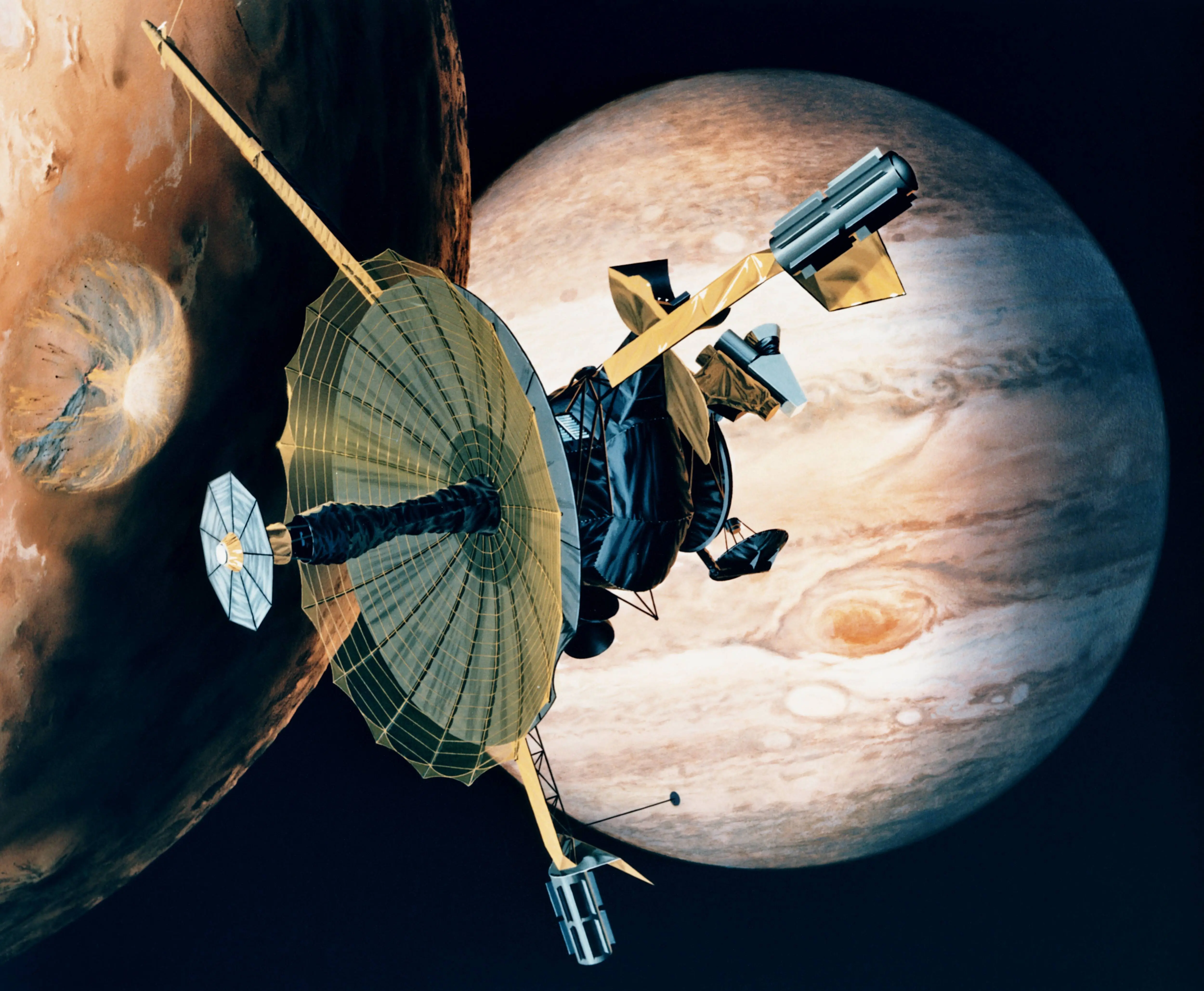India’s space telescope may have spotted 3I/Atlas before NASA’s confirmation — experts reveal what was seen
-
 circa 1989: NASA's Galileo probe passing over one of Jupiter's 16 moons. The planet's Great Red Spot, thought to be a surface storm, can be seen in the background. (Photo by NASA/Space Frontiers/Getty Images)
circa 1989: NASA's Galileo probe passing over one of Jupiter's 16 moons. The planet's Great Red Spot, thought to be a surface storm, can be seen in the background. (Photo by NASA/Space Frontiers/Getty Images)A recent report suggested that India's space telescope, AstroSat, may have detected the interstellar object 3I/Atlas before NASA's confirmation. The detection has captured the interest of scientists and space observers worldwide, particularly because NASA has remained tight-lipped about the object over the past few weeks.
What is 3I/Atlas?
3I/Atlas is no normal comet or asteroid. It's an interstellar object, meaning that it originated from outside our solar system. Scientists think that it has been in space for millions of years before arriving at our solar neighborhood.
It was first discovered earlier this year by the ATLAS observatory in Hawaii. The object is reported to be as large as Manhattan and traveling at a very high speed.
It's only the third-ever interstellar object found, following 'Oumuamua in 2017 and Comet Borisov in 2019. Since objects like these are so uncommon, researchers can learn by studying them how stars and planets are created elsewhere in the universe.
India’s early observation
India's AstroSat telescope could have found 3I/Atlas even before NASA announced it, according to a NewsX report. AstroSat, which was launched by ISRO in 2015, is India's first space telescope. AstroSat observes stars, galaxies, and other celestial occurrences in various forms of light.
Scientists confirmed the telescope detected a faint, rapidly moving object that wasn't any known comet or asteroid. After studying the data carefully, Indian scientists thought that it was possibly an object from beyond our solar system, which was later discovered as 3I/Atlas.
NASA’s silence sparks questions
NASA hasn't issued any information on whether or not it viewed 3I/Atlas with its own telescopes or spacecraft. This has generated considerable concern online, particularly since previous reports had linked NASA's Juno spacecraft to the same object.
As people continue to speculate, scientists in India are looking at their data. They maintain that AstroSat's results are significant and will be released to international research groups for further examination.
What Indian experts said
Dr. Neeraj Sharma, one of the scientists on board, stated that India's telescope may have detected the object before it became brighter near the Sun.
"We are still verifying the details and comparing the data with foreign observatories," he stated.
Early indications suggest that 3I/Atlas is composed of rock, ice, and metal, similar to comets in our solar system. However, slight variations in composition indicate it probably originates from another star system.
Dr. Meenakshi Rao, another scientist, added that the observation indicates how capable India's space telescope has become.
"AstroSat was designed to observe distant objects, and this vindicates its precision," she stated.
Why it matters
Astral objects are extremely rare and remain close to our solar system for only a brief period. Each sighting presents scientists with an opportunity to learn more about how other solar systems form.
However, it would be a huge success in Indian astronomy if India's AstroSat were to actually detect 3I/Atlas. It also indicates how India is becoming a precious contributor to transnational space exploration.
What comes next
Scientists are now monitoring 3I/Atlas as it approaches the Sun and then returns to deep space. Indian scientists intend to continue examining their data and reporting updates when the analysis is finished.
Although NASA has not spoken much up to now, the results from India demonstrate how AstroSat is leading the world in learning more about the universe — one discovery at a time.
TOPICS: 3I/ATLAS, 3I/Atlas nearing sun, NASA
- 3I/ATLAS is pulsing every 16.16 hours — what this strange pattern could mean for Jupiter’s moon Callisto
- Avi Loeb calls out bias against research on interstellar object 3I/ATLAS
- Xtend telescope captures first X-ray image of interstellar object 3I/ATLAS
- YouTube removes AI-generated 3I/ATLAS videos impersonating Harvard Professor Avi Loeb